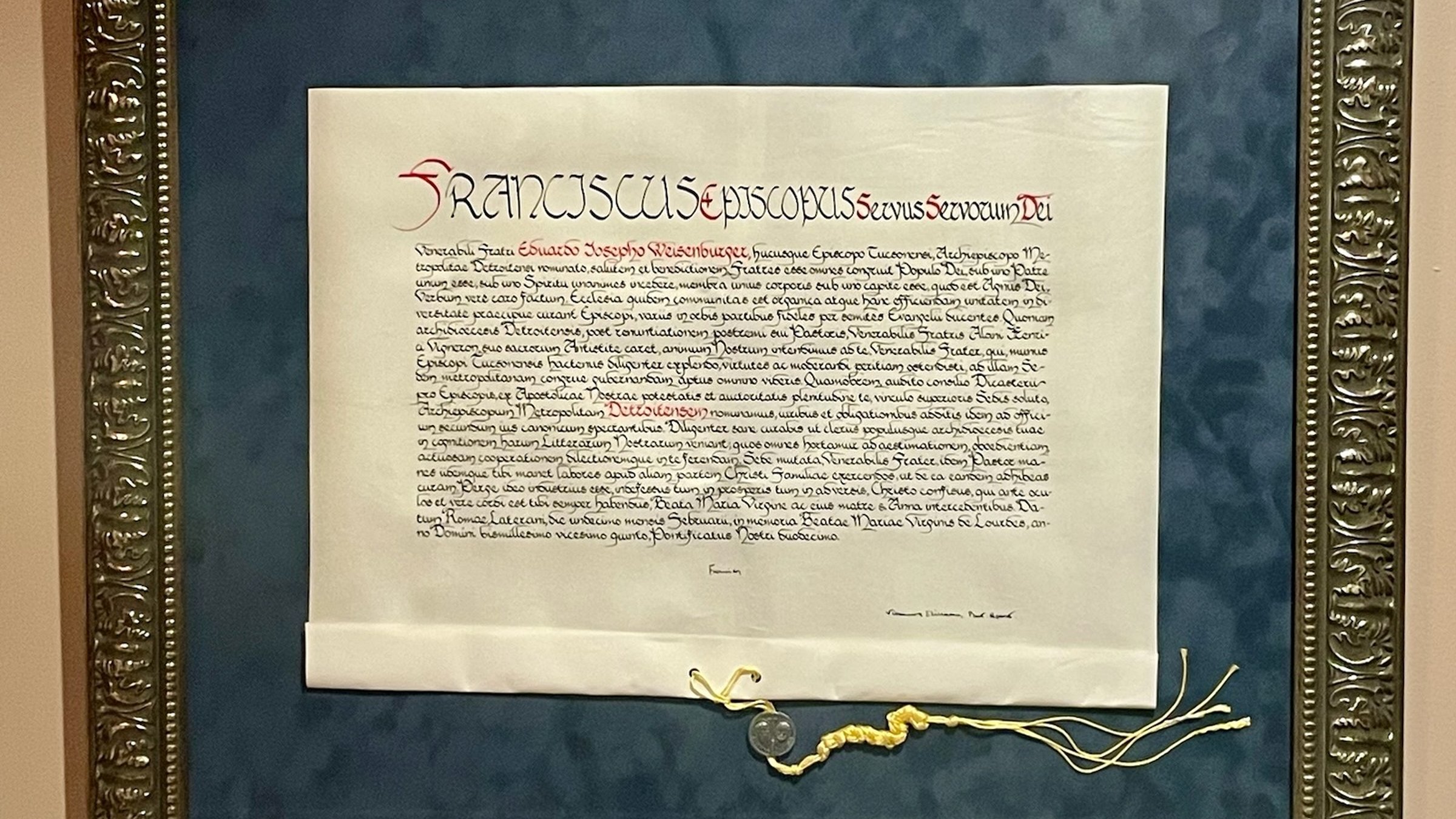Share:
The papal bull has arrived

After a wait of about two weeks following his Mass of Installation, Archbishop Edward J. Weisenburger received his papal bull of appointment as Archbishop of Detroit. The document has since been mounted, framed, and now hangs in his office at the archdiocesan Chancery.
The term “papal bull” refers to a formal document issued by the pope, often addressing matters such as doctrine, governance, and appointments to major offices. The word “bull” derives from the Latin "bulla," referring to the lead seal traditionally affixed to authenticate the document. Since the 12th century, such leaden seals have been standard for papal bulls, although on particularly solemn occasions, a gold seal was sometimes used. In more recent times, a red wax seal bearing the image of the bull is typically used, but for bishop appointments, the ancient custom of the lead seal (bulla) is still observed.
A papal bull can be signed only by the pope. Because of Pope Francis’ hospitalization, he was unable to sign Archbishop Weisenburger’s bull in time for his March 18 installation Mass. The archbishop expressed his humility and gratitude that, as the pope’s health improved, he was able to sign a final batch of such decrees, among them, Archbishop Weisenburger’s appointment.










